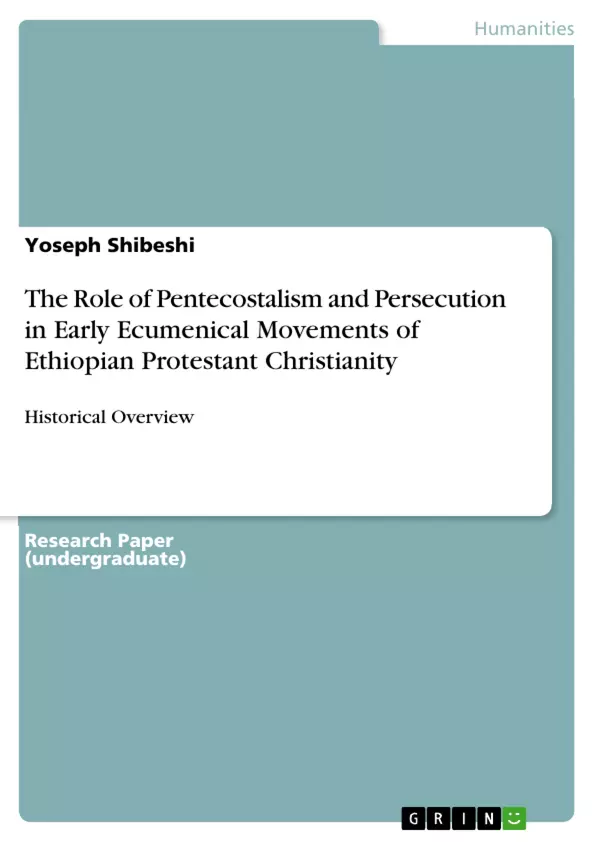The purpose of this paper is not to discuss how and in what ways the contemporary ecumenical movement could revitalize the values and missions of the early church though this is not an alien subject at all. This paper attempts to pinpoint the role of Pentecostalism in the Ethiopian protestant Christianity ecumenical movement that results eliminating the borders of denominationalism.
Inhaltsverzeichnis (Table of Contents)
- Introduction
- Christianity in Ethiopia and the introduction of foreign mission
- Introduction of Pentecostalism
- The role of the New movements in the Ecumenical movement in Ethiopia
- Conclusion
Zielsetzung und Themenschwerpunkte (Objectives and Key Themes)
This paper examines the role of Pentecostalism in the development of the ecumenical movement within Ethiopian Protestant Christianity. It aims to demonstrate how Pentecostalism, despite the challenges it poses to ecumenical dialogue, has contributed to a more unified and nationalistic spirituality among Ethiopian Protestants.
- The history of Christianity in Ethiopia
- The introduction of Pentecostalism to Ethiopia
- The impact of Pentecostalism on the ecumenical movement in Ethiopia
- The role of persecution in shaping the Ethiopian ecumenical movement
- The significance of Pentecostalism's contribution to a national identity for Ethiopian Protestants
Zusammenfassung der Kapitel (Chapter Summaries)
- Introduction: This chapter provides a brief overview of the paper's objectives and key themes, focusing on the importance of ecumenical dialogue in the context of Ethiopian Protestant Christianity. It also highlights the significance of Pentecostalism as a transformative force within the Ethiopian church.
- Christianity in Ethiopia and the introduction of foreign mission: This chapter explores the historical development of Christianity in Ethiopia, highlighting its long and complex history and the impact of foreign missionary efforts. It discusses the unique characteristics of the Ethiopian Orthodox Church and its relationship with the Eastern Orthodox Church.
Schlüsselwörter (Keywords)
The key terms and concepts explored in this paper include Pentecostalism, Ethiopian Protestant Christianity, ecumenical movement, foreign missions, persecution, national identity, and spirituality. The paper delves into the historical and theological complexities of these topics, examining their impact on the development of a unified Christian community in Ethiopia.
- Quote paper
- Yoseph Shibeshi (Author), 2013, The Role of Pentecostalism and Persecution in Early Ecumenical Movements of Ethiopian Protestant Christianity, Munich, GRIN Verlag, https://www.grin.com/document/230594



